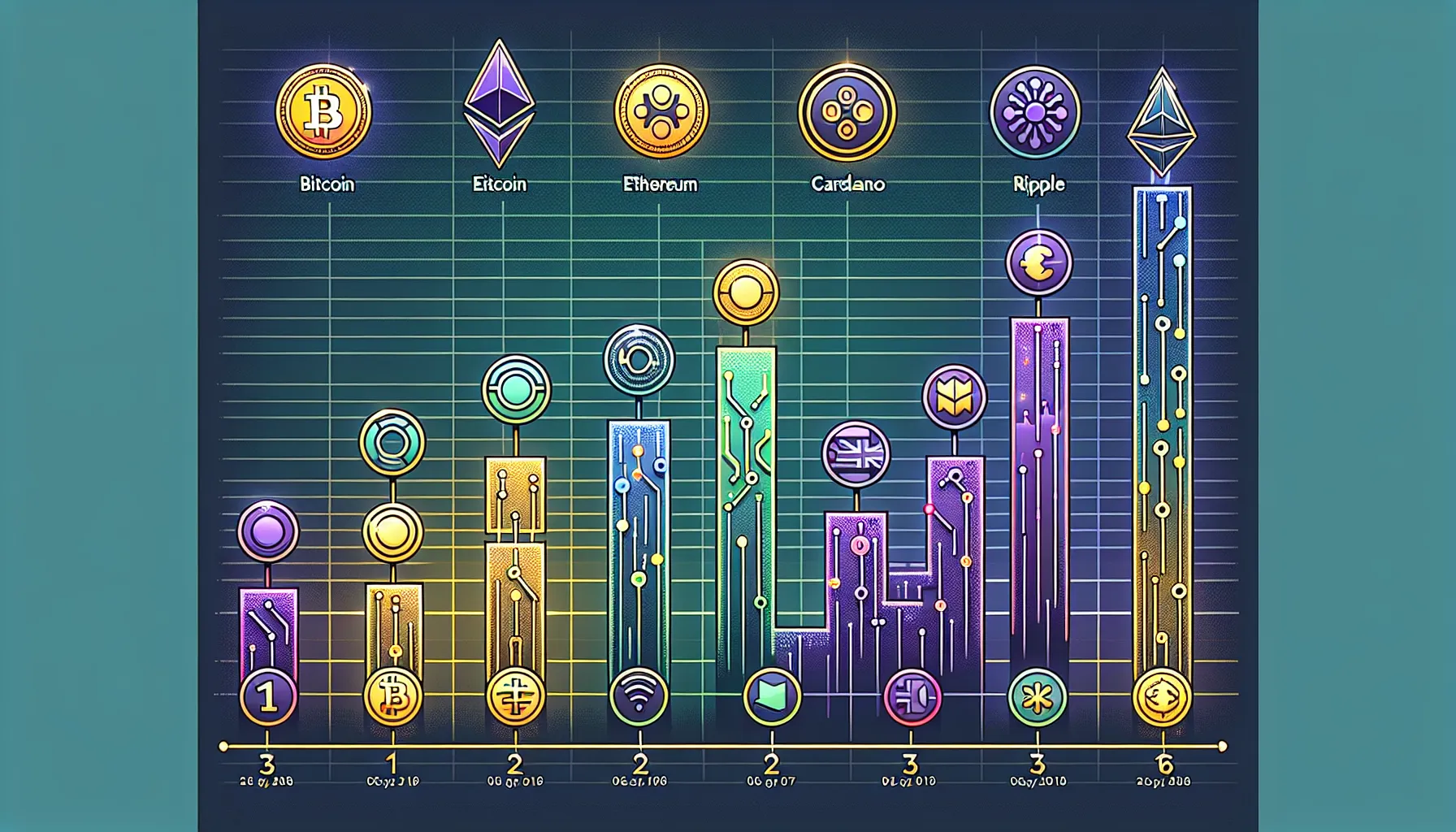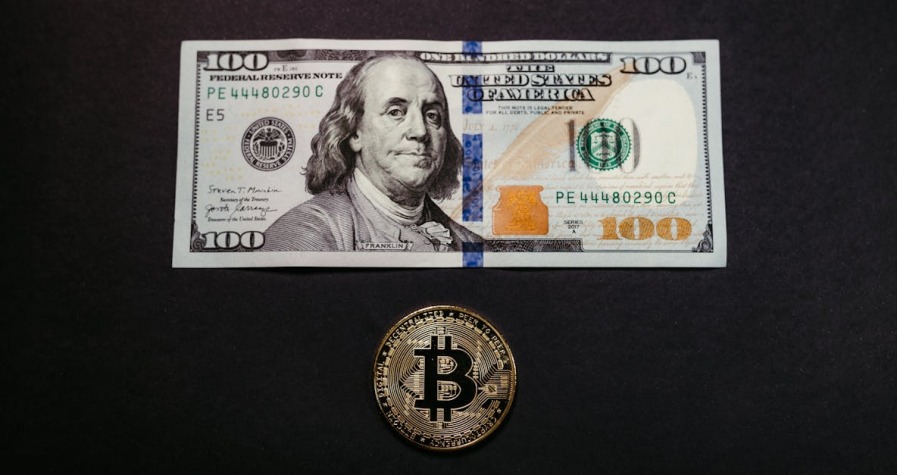Cryptocurrency investment has evolved from a niche interest to a mainstream financial opportunity, yet the sheer number of digital assets available can overwhelm newcomers. For beginners venturing into this dynamic market, selecting the right cryptocurrency is crucial, balancing stability, technological innovation, and accessibility can mean the difference between a sound investment and a costly misstep.
This guide explores the 10 best cryptocurrencies to buy for beginners, offering a carefully curated list that combines market stability with growth potential. From Bitcoin’s unrivalled recognition to emerging solutions like Polygon and Solana, each cryptocurrency on this list provides unique advantages suited to those just starting their crypto journey. Whether one’s priority is security, speed, or real-world application, these digital assets represent the strongest foundation for new investors in 2025.
Key Takeaways
- Bitcoin remains the safest entry point for beginners due to its universal recognition, excellent liquidity, and established track record as digital gold.
- Ethereum offers exposure beyond currency through smart contracts, powering DeFi, NFTs, and decentralised applications with consistent utility demand.
- The best cryptocurrencies to buy for beginners balance market stability with growth potential, from Bitcoin’s security to Solana’s high-speed transactions.
- Polygon provides an affordable entry into Ethereum’s ecosystem with penny-cost transactions, making it ideal for exploring DeFi and NFTs without prohibitive fees.
- Diversifying across established coins like Litecoin and infrastructure projects like Chainlink helps beginners build a balanced crypto portfolio with varied risk profiles.
1. Bitcoin (BTC): The Original Cryptocurrency

Bitcoin remains the undisputed king of cryptocurrency and the natural starting point for any beginner. Launched in 2009 by the pseudonymous Satoshi Nakamoto, Bitcoin introduced the world to decentralised digital currency and continues to dominate the market with the largest market capitalisation and widest adoption.
Why Bitcoin Is Ideal for Beginners
Bitcoin’s longevity and universal recognition make it the safest entry point for newcomers. Nearly every cryptocurrency exchange supports Bitcoin trading, providing excellent liquidity and countless educational resources. Its status as “digital gold” means Bitcoin has weathered numerous market cycles, establishing a track record that newer cryptocurrencies simply cannot match.
The coin’s widespread acceptance extends beyond exchanges, thousands of merchants worldwide accept Bitcoin as payment, and institutional investors have increasingly added it to their portfolios. This mainstream adoption provides a level of legitimacy and stability that beginners can rely on whilst learning the fundamentals of cryptocurrency investment.
For those new to crypto, Bitcoin’s straightforward value proposition, a decentralised store of value with limited supply, is easier to understand than the complex use cases of many altcoins. The maximum supply of 21 million coins creates built-in scarcity, a concept familiar to anyone who understands traditional investment in precious metals.
Key Considerations Before Buying
Whilst Bitcoin offers relative stability compared to other cryptocurrencies, beginners must recognise that it still experiences significant price volatility. The value can fluctuate by thousands of pounds within days, making it unsuitable for those who cannot tolerate short-term losses.
Transaction speeds and fees present another consideration. Bitcoin’s network processes transactions more slowly than newer blockchains, and during periods of high network activity, transaction fees can rise substantially. For everyday purchases, this makes Bitcoin less practical than some alternatives, though its primary function as a store of value rather than a payment method mitigates this concern.
Beginners should also understand that Bitcoin’s price point can be psychologically daunting, but cryptocurrencies are divisible, and one can purchase fractions of a Bitcoin (measured in satoshis) for modest amounts, making it accessible regardless of budget.
2. Ethereum (ETH): Beyond Digital Currency
Ethereum represents the second pillar of the cryptocurrency world and offers beginners exposure to blockchain technology that extends far beyond simple peer-to-peer transactions. Created by Vitalik Buterin and launched in 2015, Ethereum introduced programmable blockchain functionality that powers a vast ecosystem of decentralised applications.
Smart Contracts and Real-World Applications
What sets Ethereum apart is its smart contract functionality, self-executing agreements written in code that automatically enforce terms without intermediaries. This innovation has spawned entire industries within the crypto space, including decentralised finance (DeFi), non-fungible tokens (NFTs), and decentralised autonomous organisations (DAOs).
For beginners, Ethereum’s diverse ecosystem means investment in ETH provides indirect exposure to these growing sectors. When someone uses a DeFi application to earn interest on crypto holdings or purchases an NFT, they typically pay transaction fees (known as “gas”) in Ethereum. This utility creates consistent demand for ETH beyond mere speculation.
The Ethereum network underwent a transformative upgrade called “The Merge” in 2022, transitioning from an energy-intensive proof-of-work consensus mechanism to a more sustainable proof-of-stake model. This shift reduced Ethereum’s energy consumption by approximately 99.95% whilst improving scalability, factors that appeal to environmentally conscious investors and signal the platform’s commitment to long-term viability.
Ethereum’s robust developer community represents another strength. Thousands of developers continuously build applications on the platform, ensuring innovation and relevance. This active ecosystem provides beginners with confidence that Ethereum will remain at the forefront of blockchain technology for years to come.
The coin’s high liquidity and availability across virtually all exchanges make it as accessible as Bitcoin, whilst its broader utility offers a different risk-reward profile that complements a beginner’s portfolio.
3. Binance Coin (BNB): Exchange-Backed Stability
Binance Coin offers beginners a unique proposition: a cryptocurrency directly tied to the world’s largest cryptocurrency exchange by trading volume. Originally launched as an ERC-20 token on Ethereum, BNB now operates on Binance’s own BNB Chain (formerly Binance Smart Chain), providing both utility and investment potential.
Benefits for Trading Fee Reductions
The primary utility of BNB lies in its ability to reduce trading fees on the Binance exchange. Users who pay fees with BNB receive substantial discounts, creating immediate, tangible value for anyone actively trading cryptocurrencies. For beginners who plan to regularly buy and sell digital assets, holding BNB can result in meaningful savings that compound over time.
Beyond fee discounts, BNB grants access to exclusive features within the Binance ecosystem, including participation in token launches through Binance Launchpad and staking opportunities that generate passive income. The coin’s utility extends to the BNB Chain, where it functions as the native cryptocurrency for transaction fees, much like Ethereum’s gas fees.
Binance periodically conducts “coin burns,” permanently removing BNB from circulation based on trading volume. This deflationary mechanism reduces supply over time, potentially supporting long-term price appreciation. The exchange has committed to burning coins until only 100 million BNB remain in circulation, down from the original 200 million.
For beginners, BNB represents a relatively stable investment backed by the revenue and success of the Binance exchange itself. As long as Binance maintains its position as a leading exchange, BNB retains inherent value. But, this also means BNB’s fortunes are closely tied to Binance’s regulatory standing and business performance, factors beginners should monitor, particularly given increased regulatory scrutiny of cryptocurrency exchanges globally.
4. Cardano (ADA): The Research-Driven Blockchain
Cardano distinguishes itself through a methodical, academic approach to blockchain development. Founded by Ethereum co-founder Charles Hoskinson, Cardano emphasises peer-reviewed research and formal verification methods, resulting in a platform built on scientific principles rather than rapid iteration.
Sustainable and Scalable Technology
Cardano’s commitment to sustainability makes it particularly appealing for environmentally conscious beginners. The platform utilises a proof-of-stake consensus mechanism called Ouroboros, which consumes a fraction of the energy required by proof-of-work blockchains like Bitcoin. As climate concerns increasingly influence investment decisions, Cardano’s green credentials provide both ethical appeal and potential protection against future environmental regulations.
The blockchain’s layered architecture separates the settlement layer (where ADA transactions occur) from the computation layer (where smart contracts execute). This design improves scalability and allows for easier upgrades without disrupting the entire network, a significant advantage over monolithic blockchain designs.
Cardano’s development follows a roadmap divided into five eras: Byron (foundation), Shelley (decentralisation), Goguen (smart contracts), Basho (scaling), and Voltaire (governance). This transparent, phased approach provides investors with clear milestones and expectations, though critics note the platform’s methodical pace has sometimes meant slower feature deployment compared to competitors.
For beginners, Cardano offers exposure to a fundamentally sound project with strong academic backing and a clear vision for the future. The ADA token can be staked relatively easily through delegation, allowing new investors to earn passive rewards whilst supporting network security. Cardano’s community is notably engaged and supportive, creating a welcoming environment for those learning about blockchain technology and decentralised governance.
5. Solana (SOL): High-Speed Transactions
Solana has rapidly emerged as one of the fastest-growing blockchain platforms, offering transaction speeds and costs that dwarf those of earlier networks. Launched in 2020, Solana can theoretically process up to 65,000 transactions per second, a stark contrast to Bitcoin’s seven transactions per second, positioning it as a serious competitor in the race for blockchain scalability.
Why Speed Matters for New Investors
For beginners exploring decentralised applications and DeFi protocols, transaction speed and cost directly impact user experience. Solana’s efficiency means users can interact with applications, swap tokens, and transfer funds for fractions of a penny, removing the friction that can make other blockchains frustrating and expensive to use.
This performance advantage has attracted a vibrant ecosystem of developers building everything from DeFi platforms to NFT marketplaces on Solana. The network’s growing adoption demonstrates real-world validation of its technology, providing beginners with confidence that their investment supports a platform people actually want to use.
Solana achieves its speed through a unique consensus mechanism called Proof of History, which creates a historical record proving that events occurred in a specific sequence. Combined with proof-of-stake validation, this innovation allows the network to process transactions in parallel rather than sequentially, dramatically improving throughput.
But, beginners should be aware that Solana has experienced several network outages and performance issues as it scales, raising questions about decentralisation and reliability. The development team has worked to address these concerns through network upgrades, but Solana’s track record isn’t as proven as Bitcoin’s or Ethereum’s.
Even though these growing pains, Solana’s active community, strong developer support, and clear technological advantages make SOL an attractive option for beginners willing to accept slightly higher risk in exchange for exposure to a high-performance blockchain with substantial growth potential.
6. Ripple (XRP): Bridging Traditional Finance
Ripple takes a distinctly different approach from most cryptocurrencies, focusing specifically on facilitating fast, low-cost international payments between financial institutions. Rather than positioning itself as a replacement for traditional finance, XRP aims to enhance existing systems, making it particularly interesting for beginners who see cryptocurrency’s future as complementary to, rather than antagonistic toward, established banking.
Cross-Border Payment Solutions
International money transfers through traditional banking channels remain slow and expensive, often taking several days and incurring multiple intermediary fees. Ripple’s payment protocol enables near-instantaneous cross-border transactions with minimal costs, addressing a genuine pain point in global commerce.
Major financial institutions and payment providers have partnered with Ripple Labs to pilot and carry out its technology, providing real-world validation that traditional finance sees value in blockchain solutions. For beginners, these partnerships suggest that XRP isn’t merely speculative but serves a practical function within the broader financial ecosystem.
Ripple’s consensus mechanism differs significantly from proof-of-work and proof-of-stake systems. Instead, the XRP Ledger uses a unique consensus protocol where a network of trusted validators agrees on transaction order and validity. This approach provides fast transaction finality (typically 3-5 seconds) and can handle approximately 1,500 transactions per second.
Beginners considering XRP must understand the ongoing regulatory uncertainty surrounding the cryptocurrency. Ripple Labs has faced legal challenges, most notably a lawsuit from the U.S. Securities and Exchange Commission questioning whether XRP constitutes an unregistered security. Whilst recent court rulings have largely favoured Ripple, the regulatory landscape remains unsettled, introducing risk that new investors should carefully weigh. Even though these challenges, XRP’s established presence, clear use case, and partnerships with major financial players make it a compelling option for diversified beginner portfolios.
7. Polkadot (DOT): Connecting Blockchains
Polkadot addresses one of blockchain technology’s fundamental limitations: the inability of different networks to communicate and share information seamlessly. Founded by another Ethereum co-founder, Gavin Wood, Polkadot creates an internet of blockchains where multiple specialised chains can interact, share security, and transfer data.
Interoperability for the Future
As the cryptocurrency ecosystem matures, interoperability becomes increasingly critical. Users and applications need the ability to leverage the strengths of different blockchains without being locked into a single ecosystem. Polkadot’s architecture enables this cross-chain functionality through its relay chain, which connects multiple parallel blockchains (called parachains) into a unified network.
For beginners, Polkadot represents a bet on blockchain’s future infrastructure. Rather than backing a single application or use case, investing in DOT provides exposure to a platform designed to support the entire multi-chain ecosystem. As more projects build on Polkadot or connect their existing blockchains to its network, the utility and demand for DOT potentially increase.
Polkadot’s governance model empowers DOT holders to influence the network’s future development through on-chain voting. This democratic approach ensures that stakeholders, including beginners who hold even modest amounts, have a voice in protocol upgrades and treasury spending decisions.
The platform’s shared security model represents another innovation. Parachains inherit security from the relay chain rather than needing to establish their own validator networks from scratch. This significantly lowers the barrier for new blockchain projects whilst maintaining robust security, potentially accelerating ecosystem growth.
Beginners should understand that Polkadot’s vision is ambitious and still unfolding. The network’s parachain auctions, where projects compete for limited slots to connect to the relay chain, have generated significant activity, but the ecosystem remains younger and less proven than Ethereum’s. For those with a longer investment horizon and interest in cutting-edge blockchain architecture, DOT offers compelling potential.
8. Litecoin (LTC): Bitcoin’s Faster Sibling
Litecoin, created in 2011 by former Google engineer Charlie Lee, was designed as the “silver to Bitcoin’s gold”, a lighter, faster alternative for everyday transactions whilst maintaining the core principles that made Bitcoin revolutionary. For beginners seeking a well-established cryptocurrency with practical utility, Litecoin presents a proven option.
Lower Fees and Quick Transactions
Litecoin’s technical modifications to Bitcoin’s codebase result in meaningfully faster transaction confirmation times, approximately 2.5 minutes compared to Bitcoin’s 10 minutes. For users wanting to send or receive cryptocurrency without lengthy waits, this speed advantage makes Litecoin more practical for day-to-day use.
Transaction fees on the Litecoin network remain consistently low, typically a fraction of a pound regardless of the amount sent. This cost efficiency makes Litecoin suitable for smaller transactions where Bitcoin’s fees might be proportionally excessive. As merchants and payment processors increasingly accept cryptocurrency, Litecoin’s combination of speed and low costs positions it well for actual commerce rather than merely speculation.
Litecoin has consistently ranked among the top cryptocurrencies by market capitalisation for over a decade, demonstrating remarkable staying power in an industry where countless projects have disappeared. This longevity provides beginners with confidence that Litecoin will likely remain supported by exchanges, wallets, and payment systems for the foreseeable future.
The cryptocurrency’s adoption of innovative technologies before Bitcoin, such as Segregated Witness (SegWit) and the Lightning Network, demonstrates the development team’s commitment to continuous improvement. These implementations often serve as testing grounds that inform Bitcoin’s own upgrades, positioning Litecoin as an innovation laboratory for the broader cryptocurrency space.
Whilst Litecoin may lack the revolutionary features of newer blockchains, its stability, reliability, and clear use case make it an excellent portfolio component for beginners prioritising proven technology over speculative potential. The straightforward value proposition, a faster, cheaper Bitcoin, remains relevant and understandable for newcomers navigating the often-complex cryptocurrency landscape.
9. Chainlink (LINK): Powering Smart Contract Data
Chainlink solves a critical problem that limits smart contract functionality: the inability to reliably access real-world data. Whilst blockchains excel at processing internal transactions, they cannot natively communicate with external systems like weather databases, stock markets, or payment networks, a limitation known as the oracle problem.
The Role of Oracle Networks
Chainlink’s decentralised oracle network acts as a bridge between blockchains and external data sources, enabling smart contracts to interact with information from the real world. For example, a crop insurance smart contract might need to verify weather data to trigger automatic payouts, or a DeFi protocol might require accurate price feeds to execute trades properly. Chainlink provides these connections securely and reliably.
For beginners, Chainlink represents infrastructure investment, betting on the fundamental technology that makes advanced blockchain applications possible rather than on specific applications themselves. As smart contract adoption grows across industries, the demand for reliable oracles should correspondingly increase, potentially benefiting LINK holders.
Chainlink’s technology has been integrated by hundreds of projects across multiple blockchains, including Ethereum, Binance Smart Chain, and Polygon. This blockchain-agnostic approach provides diversification advantages: Chainlink isn’t dependent on any single platform’s success but rather benefits from growth across the entire smart contract ecosystem.
The network’s decentralised structure employs multiple independent node operators to source and verify data, preventing single points of failure or manipulation. This security model proves particularly important for DeFi applications managing substantial value, where inaccurate price data could result in catastrophic losses.
Beginners should recognise that Chainlink’s value proposition is more technical and less immediately intuitive than straightforward payment cryptocurrencies. But, for those interested in understanding blockchain’s deeper functionality and investing in the infrastructure layer, LINK offers exposure to technology that’s becoming increasingly essential as smart contracts tackle more complex real-world problems.
10. Polygon (MATIC): Ethereum’s Scaling Solution
Polygon addresses Ethereum’s most significant limitation: scalability. During periods of high network activity, Ethereum’s transaction fees can skyrocket to prohibitive levels, pricing out smaller users and limiting the platform’s mass-market appeal. Polygon provides a solution through Layer 2 scaling technology that processes transactions off the main Ethereum chain whilst maintaining security guarantees.
Affordable Entry Point for Beginners
For newcomers wanting to explore Ethereum’s ecosystem without paying premium fees, Polygon offers the ideal entry point. Transactions on Polygon typically cost mere pennies, making it practical to experiment with DeFi protocols, NFT marketplaces, and decentralised applications without committing significant capital merely to cover gas fees.
Polygon’s approach maintains compatibility with Ethereum, meaning developers can easily port existing applications to the network with minimal modifications. This compatibility has resulted in rapid ecosystem growth, with major DeFi platforms, gaming projects, and NFT collections establishing presence on Polygon. For beginners, this means access to a rich variety of applications whilst enjoying significantly improved transaction economics.
The MATIC token serves multiple functions within the ecosystem: paying transaction fees, participating in network security through staking, and governance voting. This multi-faceted utility creates various sources of demand beyond pure speculation, providing fundamental value that beginners can understand and assess.
Polygon’s partnerships with major brands and platforms, including collaborations with Disney, Starbucks, and Adobe, demonstrate mainstream recognition and adoption. These high-profile relationships suggest that Polygon’s technology has proven itself capable of supporting enterprise-scale applications, providing validation that extends beyond the cryptocurrency community.
Beginners should understand that Polygon operates in an increasingly competitive landscape, with multiple Layer 2 solutions vying for Ethereum’s scaling business. But, Polygon’s first-mover advantage, extensive ecosystem, and continuous innovation through acquisitions and new product launches position it well for sustained relevance. For those seeking affordable exposure to Ethereum’s growth without the associated fee burden, MATIC represents an accessible and practical option.
Frequently Asked Questions
What is the best cryptocurrency to buy for beginners in 2025?
Bitcoin (BTC) remains the best starting point for beginners due to its unrivalled recognition, widespread adoption, and proven track record since 2009. Its straightforward value proposition as digital gold and availability on nearly every exchange make it the safest entry point for newcomers.
How much money do I need to start investing in cryptocurrencies?
You can start investing in cryptocurrencies with any amount, as digital assets are divisible. For instance, Bitcoin can be purchased in fractions called satoshis, allowing beginners to invest modest sums whilst gaining exposure to the market regardless of budget constraints.
Why is Ethereum considered a good cryptocurrency for beginners?
Ethereum offers beginners exposure beyond simple transactions through smart contract functionality. It powers DeFi, NFTs, and decentralised applications, providing indirect exposure to growing sectors. The 2022 Merge upgrade improved sustainability and scalability, appealing to long-term investors.
What are the main risks of investing in cryptocurrency as a beginner?
Beginners face significant price volatility, potential for substantial short-term losses, regulatory uncertainty, and security risks from hacking or lost access. The cryptocurrency market operates 24/7 without traditional investor protections, requiring careful research and only investing what you can afford to lose.
How do Layer 2 solutions like Polygon benefit new crypto investors?
Polygon and other Layer 2 solutions dramatically reduce transaction fees to pennies whilst maintaining Ethereum compatibility. This allows beginners to explore DeFi protocols, NFTs, and decentralised applications affordably, removing the barrier of prohibitively high gas fees during network congestion.
Can I earn passive income from cryptocurrency without trading?
Yes, through staking proof-of-stake cryptocurrencies like Cardano (ADA), Ethereum (ETH), or Binance Coin (BNB). Staking allows you to earn rewards by supporting network security whilst holding your assets, providing passive income without the risks and complexities of active trading.








